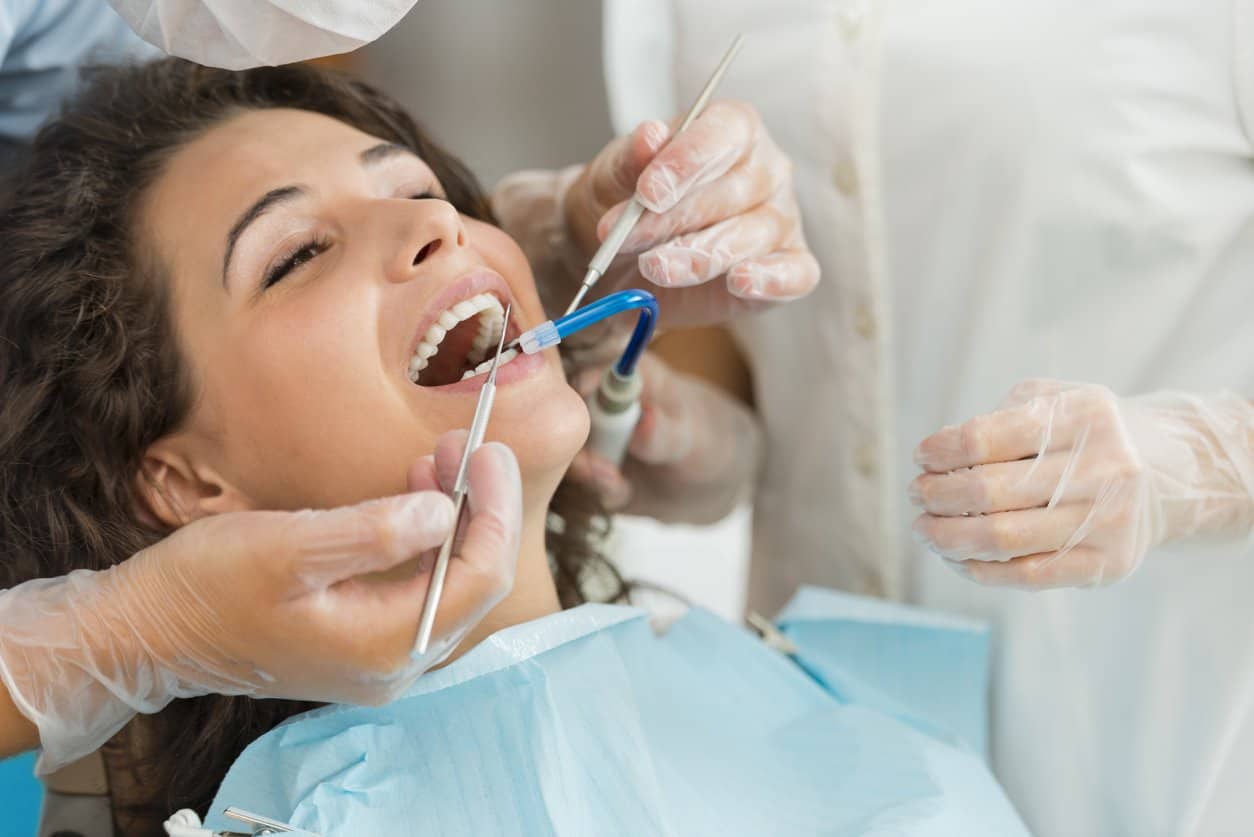Every dentist and periodontist near you will take every reasonable step to avoid the need to extract a tooth. As a general rule, preserving your natural teeth is in your best interest. When a tooth extraction in Los Angeles is necessary, though, your dentist will give you detailed and careful advice about how to heal after a tooth extraction. Here is a general timeline of what to expect during recovery.
During the first 24 hours
In the first 24-hour period after tooth extraction in Los Angeles, blood clots will develop in your mouth and the sutures placed by your dentist will encourage healing. During this period, you should expect to experience some minor pain and bleeding. Over the counter medications are usually sufficient to soften any pain you experience. The swelling you will experience after surgery typically peaks approximately 24 hours later and usually diminishes quickly. During this 24-hour period, you should avoid any strenuous or athletic activity, though sedentary activities such as driving, walking and office duties should be fine.
If you continue to experience pain more than two the three days after your surgery, you should contact your periodontist in Los Angeles to confirm that no complications have arisen.
The first two days after tooth extraction
The first two days after surgery are when the bulk of the body’s healing will occur. The experience of some minor bleeding and soreness during this two-day period is normal. To ensure the fullest possible recovery during this period, follow these five basic guidelines:
- Get lots of rest, especially in the first 24 hours
- Don’t touch the gauze placed by your dentist until instructed by your dentist (but then change it as required)
- Take over-the-counter pain medication as required, but as instructed
- To avoid placing your blood clot in jeopardy, do not create any suction in your mouth by smoking, drinking through straws or spitting
- When resting (which you should do lots of!) keep your head elevated
Three days after your teeth were pulled
Once you’ve been healing for three days, the socket where your tooth was formerly located will likely have healed almost completely. By this point, you may experience some lingering soreness or tenderness but bleeding and swelling should have disappeared. To maintain the clot that has developed in your socket, follow these three basic guidelines:
- Rinse your mouth gently with warm salted water to prevent the growth of bacteria and the development of infection
- Brush and floss normally, but avoid the area around your extraction site
- Throughout your entire hearing process, avoid hard and crumbly foods that can allow debris to accumulate in your socket. Instead, emphasize eating soft foods such as mild soup, yogurt, apple sauce and mild mashed potatoes.
One week after extraction
One week after your surgery, non-dissolving stitches will be removed and dissolving stitches will disappear. By the seven to 10 day stage, your clot should be well established. If you’re still experiencing pain and bleeding beyond the one week point, contact your dentist for their input and advice.
Two weeks after extraction
By two weeks after your surgery, your socket will be nearly fully healed though still tender. Because the healed socket will still be tender, you should avoid bushing the area aggressively and chewing too directly at the site. Both activities invite the risk that the healed socket will rupture and develop an infection.
Three weeks after extraction
By the end of the third week after surgery, your healing process will be largely finished, even if you still notice some tenderness around the extraction site. The only remaining note of caution to keep in mind is to be alert to any food debris accumulating in the former extraction site. Gently brushing, flossing and rinsing should be sufficient to prevent that problem.
You can rest assured that your dentist’s staff will provide you with detailed instructions about recovering from a tooth extraction near you. In the event of any conflict between this general guideline and those instructions, follow your dentist’s instructions precisely. If you have any questions or concerns, though, contact your periodontist for advice and support as you heal.
